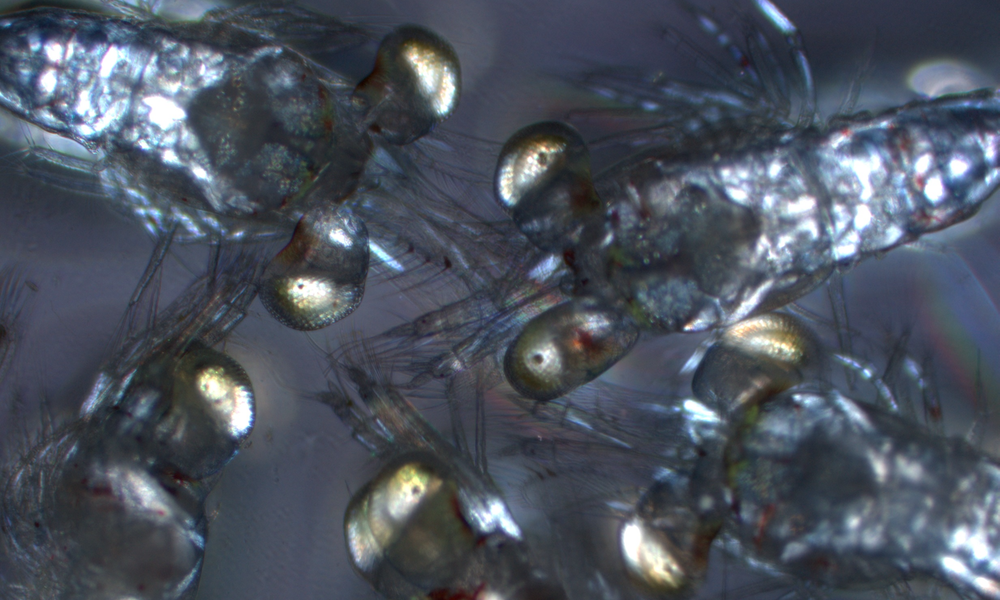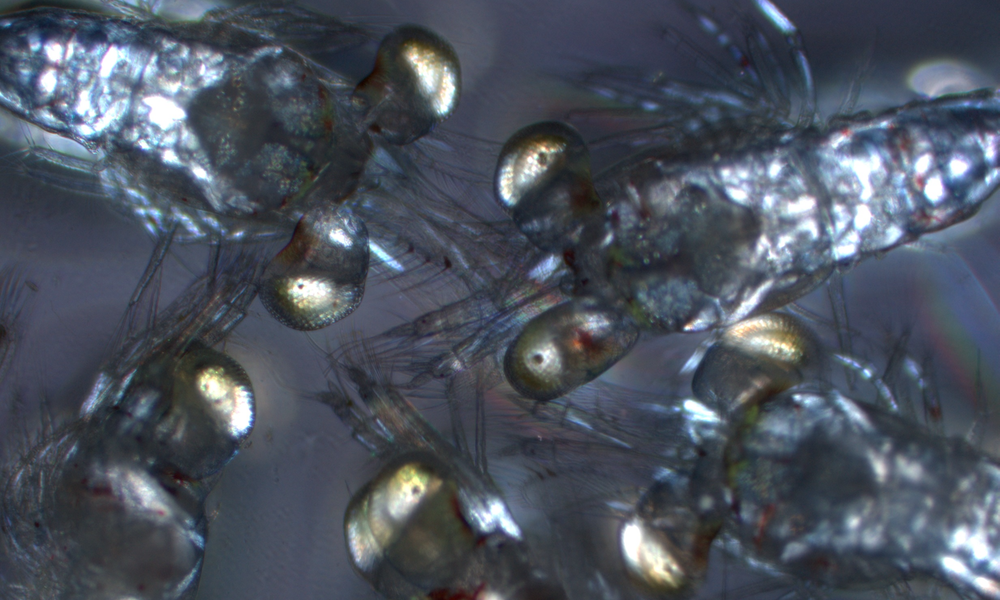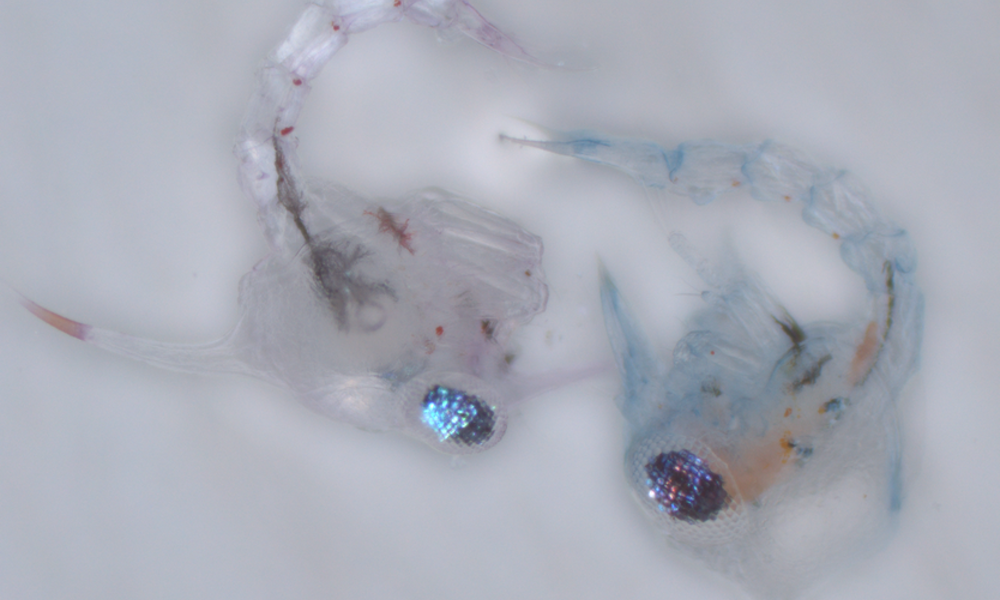Eyes Help Shrimp Hide
The bodies of the jellyfish, squid, and prawns that live in the deep ocean are so transparent to light that they are nearly invisible to the animals that prey on them. One part of their body that can give away their presence is their eyes—to have functioning eyesight creatures typically need to maintain eye pigments, the colors of which can make them conspicuous. Now a team of researchers shows that crustaceans can get around this problem by overlying the pigment with a refractive photonic glass made of crystalline nanospheres [1]. The creatures can tune the sizes of the nanospheres so that they perfectly reflect the murky blues, yellows, and greens of the deep ocean, allowing the creature to stay hidden.
For their study, Keshet Shavit of Ben-Gurion University of the Negev, Israel, and her colleagues looked at eyes from a variety of larval crustaceans, including Macrobrachium rosenbergii, a giant freshwater prawn; shrimp, lobster, and crab larvae. The studied species all had transparent bodies and brightly colored eyes. The team froze eyes from each creature using a flash-freezing method that is known to keep eye structure unaltered and then fractured the eyes in half, allowing them to access the eyes’ internal structures. The samples were then imaged using a technique called cryogenic scanning electron microscopy (cryo-SEM), which allows for high-resolution imaging of samples at ultra-low temperatures.
The team found, encased in the eyes of the studied creatures, a 3-𝜇m-thick layer of spheres that were a few hundred nm in diameter. Such “photonic glass” structures are known to be able to selectively reflect light with visible wavelengths, giving the structures intense hues. For the shrimp, the team found that the eye nanospheres for different species have different diameters. This diameter correlates with each species’ observed “eyeshine” color—the apparent color of their eyes—as expected from theory. The team also found that the shrimp can tune the size and ordering of the nanoparticles around their eyes, allowing the creatures to alter the appearance of their eyes.
The team found similar results for the other crustaceans that they studied. For example, one species of prawn has a yellow eyeshine during the day and a green-yellow one at night. The cryo-SEM analysis of this species’ eyes revealed this color change is accompanied by a decrease in the amount of disorder in the nanoparticle packing, which the team’s simulations show leads to the observed color change.
Shavit says that the team doesn’t yet know the mechanism by which the crustaceans tune the nanoparticles’ sizes and ordering. The researchers plan to explore that problem in future studies. Kate Feller, a biologist at Union College, New York, is excited to see what those studies find. “These glittery, reflective structures are very clearly beneficial to camouflaging in the open ocean,” Feller says. “But it seems like all of these species are [using] different mechanisms. That’s the part that I’m just so excited [to learn more] about.”
Johannes Haataja, a postdoctoral researcher at the University of Cambridge, UK, and one of the researchers on the team, says that the observed eye structures are also interesting from a materials point of view as they have a very high refractive index. Highly refractive materials are relevant to a wide range of technologies from cameras to vehicle paints to cosmetics because they allow manufacturers to create systems with vibrant hues. But most highly refractive compounds, such as titanium dioxide, are inorganic, and there are concerns about their toxicity. The crustaceans provide “inspiration of how to make these [refractive] colors using organic, environmentally safe materials,” Haataja says.
–Allison Gasparini
Allison Gasparini is a freelance science writer based in Santa Cruz, CA.
References
- K. Shavit et al., “A tunable reflector enabling crustaceans to see but not be seen,” Science 379, 695 (2023).







